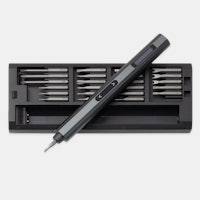Click to view our Accessibility Statement or contact us with accessibility-related questions




Asking Aggro-vating Questions - Massdrop East/West: Article #10

search
close
Sort by: Newest
keyboard_arrow_down
Let’s get the conversation started!
Be the first to comment.
PRODUCTS YOU MAY LIKE
Trending Posts in More Community Picks

Graham88
Completely surprised by the lack of blade diversity here on Drop...
I’ve been a collector of Blades since before my teens, and a retailer coming up on 15… or maybe 20 years. Drop has really been kind of an interesting experience for me, because I do occasionally get to see some unusual tech and sometimes EDC items that otherwise I might not have been aware of. And maybe it’s because I have a deep love of cutlery and bladed weapons, but I find myself trolling through the site looking at it what’s available; and it’s just it’s pretty much the same. And the bladed community here is just always confused me.. every single knife is about the same, they’re almost all drop points and although the handle materials change and brands change.. it’s really just the same knife over and over and over again... occasionally you’ll see a tanto or a slight variant; but rarely… and almost never a serrated blade. And I’m just deeply amazed at this diversion of serrated blades. And I’m just surprised there isn’t more of a request for diversity here.... and I...
Mar 12, 2020
JellyDPhoto
Can we get Sony E-Mount or other mirrorless camera options please..
Would be nice to see some Sony E mount full frame cameras on here. I currently shoot with a A99 and they killed the lense path for better or more option lenses and now is all E-Mount. 🤔
Jan 13, 2020
RayF
There Are Pandas, and Then There Are Pandas.
And this isn't either of them! The Pandas we're talking about here, are watches, not bears. And what got me thinking about them (again) was a link posted this morning by @cm.rook who pointed a few of us to the very attractive (and not terribly priced) Yema "Rallygraph" Panda which, in it's most traditional arrangement, looks like the one on the left, but can also be had in the version on the right: The model on the left is a true Panda, while the model on the right is called a reverse Panda. The reason for that distinction is clear--Panda bears, only come in the first arrangement. Now at this point, everyone should be thinking about the most well-know Panda, The Rolex Panda, which is actually a Daytona, and among Rolex Daytonas, the most famous of which is the Paul Newman Daytona, which was famous first, because it was Paul's, and second because it sold at auction for $17.8 million (US Dollars). The story of that auction is well-known so I'll only...
Nov 8, 2019








Hello everyone, my name is Timothy Wu. I am a Gold level pro and a member of Massdrop East. Although some of you may recognize me as relatively new to competitive magic, I have actually been playing on-and-off since 1996. I’m definitely dating myself here, but I played in half a dozen Pro Tours around the turn of the century before “retiring” from competitive Magic for roughly a decade. During my time off I tried to keep up a bit with limited draft formats, doing one or two drafts per month of the current sets on Magic Online. Such infrequent drafting during my time away from the game never afforded me the opportunity delve deeply into any specific limited formats. Given this constant lack of experience compared to other drafters in my pods, I adopted a strategy that never goes out of style no matter what set you are drafting: play 15 to 18 creatures, play 2 to 4 removal spells, play 2 to 3 combat tricks, and most importantly – draft your deck to curve out. Since coming out of Magic retirement, this simple recipe has helped lead me to a 70% limited win rate over the last 8 Pro Tours and a second place finish in last year’s Pro Tour Limited Master race - aka “First Loser” :(
“Be the first and only one asking questions” - I consider this to be the hallmark of any aggressive strategy. Your goal is to get on the board first, dictate what your opponent must do, and keep the pressure on. If your opponent doesn’t have the answers to your questions, then they will quickly find themselves on the back foot. There are a few basic ways to draft an aggressive, questions-asking deck. First and foremost, draft enough 2-drops. There is not a feeling I hate more than passing on turn two with two untapped lands. It is imperative to establish your board presence quickly and continuously during the first five to six turns of the game. This means actively prioritizing to draft six to eight quality 2-drop creatures along with maybe five to seven quality 3-drops for your deck. I don’t mind having as many as nine 2-drops as long as their stats are sufficient. Casting 2-drops on turns two and three is perfectly fine and also leaves up a mana on turn 3 for a bluffed or realized combat trick. Even better than the 2-drop, is the 1-drop. I will include 1-drop 2/1s and 1-drops that have unique secondary abilities, however most 1-drop creatures are generally not impactful enough to play.
This leads me to another basic tenet of the aggressive draft deck – cheap combat tricks. I always like to have a few cheap combat tricks in my aggressive decks, and by cheap I mean 1 or 2 casting cost. However, I don’t prioritize taking combat tricks because most decks don’t need more than 2 or 3, they usually can be taken later in packs, and the value over replacement level of “average” vs “premium” combat tricks is fairly small. The idea behind the cheap trick is it allows you to cast multiple spells per turn, which allows you to continue developing your board and presenting additional questions. Make sure to be familiar with casting cost requirements for all of the common tricks in the format so you know what mana to leave up when bluffing. I’m not going to go too much into when to bluff and when to not, but I find the combat trick bluff/non-bluff game to be one of the most enjoyable parts about being the aggressive deck. As the aggressor, there is an art to reading your opponent and trying to figure out if they will block or not given the game state and their read on you. As the games and match progress, make sure to note how they played around (or didn’t play around) your attacks, and leverage that information to manage your bluffs later in the games/match.
At the top end of the curve, I generally like to have four to six 4-drop and 5-drop creatures. I consider these slots to be finishers and since we are paying so much mana for them, I want mostly high quality cards with premium abilities (flying, menace, excellent power-to-casting cost ratio, unique or powerful effects or abilities) in these slots. These creatures should pose as the toughest questions for your opponents to answer.
Even with all of the preceding talk about aggressive creatures and cheap combat tricks, of course your number one priority (and most likely everyone else’s number one priority at the table) is to draft quality removal spells. Instant speed removal is best, but I would still take sorcery speed, unconditional removal very high in aggressive decks. At some point during a game your opponent may stabilize and present a threat that your smaller creatures can’t attack into. Having a few ways to remove these roadblocks is essential. In the early game, if my hand is good and I know I can continue to press the advantage in later turns, I have no qualms in using a piece of premium removal on an opponent’s mediocre creature if it allows me to alpha strike and take a good chunk out of their life total.
There are also less common utility cards that can and should be considered for aggressive draft decks. Anthems and instant speed anthems are generally very good in these go-wide aggressive strategies. Also most sets will have a falter effect and I usually don’t mind playing a single falter-type card in my aggressive decks. Creatures auras need to be scrutinized a bit more. I would hesitate to put any creature auras in aggressive decks unless they significantly bolster a creature’s attacking ability (either through enhancing power and toughness and/or giving that creature evasion) and ends the game within a few turns if left unanswered by your opponent. Then there are some utility cards that aggressive decks just may have to play as filler. Most sets have cheap cantrips that create some small temporary advantage (like tapping a creature or making a creature unblockable for a turn).
Although not ideal, sometimes you may find yourself needing to fill out the last few slots cantrips, which also may allow you to lower your land count. Although the above is just a guideline on how to draft aggressive decks, regardless of the limited format I have been able to apply this strategy when the aggressive colors are open and being passed. You can also fairly easily switch into this strategy when synergy-based midrange draft decks become derailed during the draft.
Here in the Washington, D.C. area our draft culture is very strong. Over the last year D.C. has hosted a release weekend draft camp before each Pro Tour where I am able to log 6 to 8 practice drafts over the course of one weekend. D.C. locals also draft several times per week to help prepare qualified players in the weeks prior to the Pro Tour. So on average I get in over a dozen drafts before sitting down at my draft pod at the PT. However due to a vacation and new responsibilities at work at the beginning of this year, I missed the draft camp and most local drafts in the weeks leading up to Pro Tour Aether Revolt. Long story, short: when I sat down at my draft pod at the Pro Tour, I had a grand total of three drafts of Aether Revolt/Kaladesh under my belt! So what do you think I did? Here’s the deck I ended up drafting:
The cards positioned sideways on the right are relevant sideboard and/or cuts that I made to the deck. I wish I had one more 2-drop creature, but aside from that the basic outline that I described above can be seen here – a low creature curve, cheap combat tricks, good removal, a falter effect, and a few anthem effects. Applying this strategy allowed me to 3-0 my draft pod with little knowledge of the new limited archetypes that Aether Revolt introduced. In fact, although there are a few 2-card synergies at play in this deck, we really can’t call this deck a vehicles deck, or an energy deck, or an improvise deck. While others in my pod were trying to implement untuned, unperfected draft strategies like artifacts-matter, revolt, or midrange energy decks, I simply drafted good creatures, ensured I had a good curve, deployed threats each turn, and then turned my creatures sideways.
[An aside: Knowing what I know now about the format, I would have built the above deck slightly differently. I would cut Aether Inspector and a Plains for a Bastion Enforcer and Wrangle. Some of my Massdrop East/West teammates have suggested playing the Aradara Express, but I’m kind of loathe to add another high casting cost spell at the expense of a less streamlined creature curve, especially if I am going down to 16 lands in this build.]
I’m super excited about the fast approaching Amonkhet release date. This means we will soon have the chance to learn and explore new card mechanics and limited deck archetypes! I very much enjoy testing out new cards and limited strategies. But in the end, I like winning a whole lot more. So during the early weeks of Amonkhet’s release while other players at the draft table are wrapping their heads around correct pick orders, new card synergies, and building optimal decks for the new archetypes, you may want to think about ignoring all of that, implementing this aggressive strategy, and drafting to win.
Any questions? ;)
Thanks for reading, and please post any feedback below!
We had an exciting reveal of two Amonkhet masterpieces this week, check out the video here: https://www.massdrop.com/talk/1482/scouting-report-massdrop-east-west-on-2-amonkhet-masterpieces
If you are curious about our team, check out our intro: https://www.massdrop.com/talk/1117/announcing-team-massdrop-east-west
or, read our previous weekly articles:
1. How to Prepare for an MtG Pro Tour by Ben Weitz (https://www.massdrop.com/talk/1158/how-to-prepare-for-an-mt-g-pro-tour)
2. Approaching New Magic Drafts by Ari Lax (https://www.massdrop.com/talk/1193/approaching-new-magic-drafts)
3. Constructed Testing for Pro Tour Aether Revolt by Jarvis Yu (https://www.massdrop.com/talk/1213/recap-of-constructed-testing-for-massdrop-east-west-for-pro-tour-aether-revolt)
4. Breaking into Eternal Formats - Case Study: GP Louisville by Jon Stern (https://www.massdrop.com/talk/1240/breaking-into-eternal-formats-case-study-gp-louisville-massdrop-east-west-article-4)
5. In Good Company - Top 8 at GP Vancouver by Eric Severson (https://www.massdrop.com/talk/1285/in-good-company-top-8-at-gp-vancouver)
6. Adapting to Full Block Kaladesh Limited by Jiachen Tao (https://www.massdrop.com/talk/1323/adapting-to-full-block-kaladesh-limited-massdrop-east-west-article-6)
7. Sorry My Felidar Guardian Ate My Homework by Mark Jacobson (https://www.massdrop.com/talk/1364/sorry-my-felidar-guardian-ate-my-homework-massdrop-east-west-article-7)
8. Taking a Mardu Vacation - Top 8 in New Jersey and Heading to an Eternal Extravaganza by Jarvis Yu (https://www.massdrop.com/talk/1401/taking-a-mardu-vacation-top-8-in-new-jersey-and-heading-to-an-eternal-extravaganza-massdrop-east-wes)
9. A Guide to the Grind by Pascal Maynard (https://www.massdrop.com/talk/1448/a-guide-to-the-grind-massdrop-east-west-article-9)
Be sure to vote on Massdrop’s poll for future Amonkhet product drops here: https://www.massdrop.com/vote/Amonkhet.